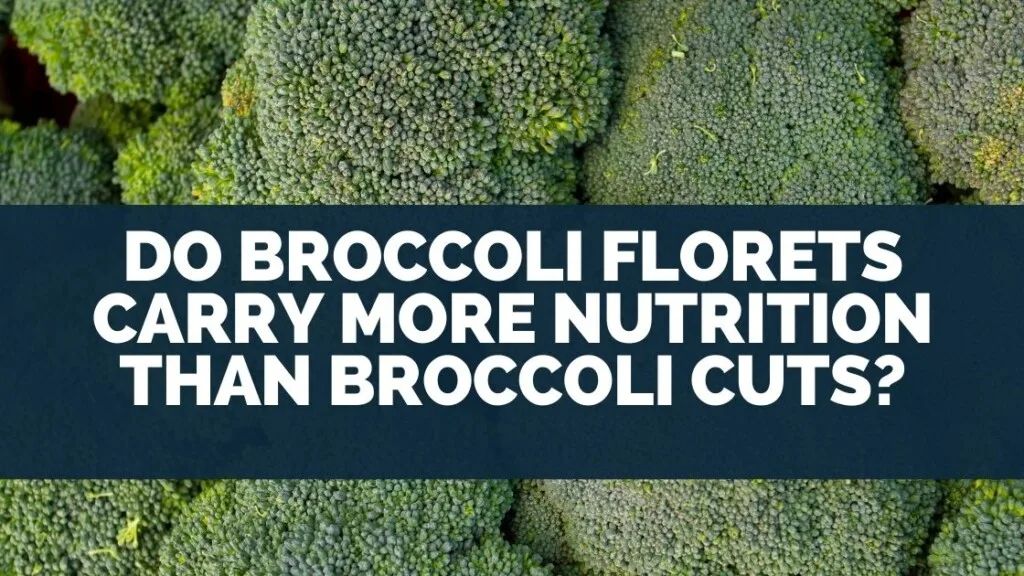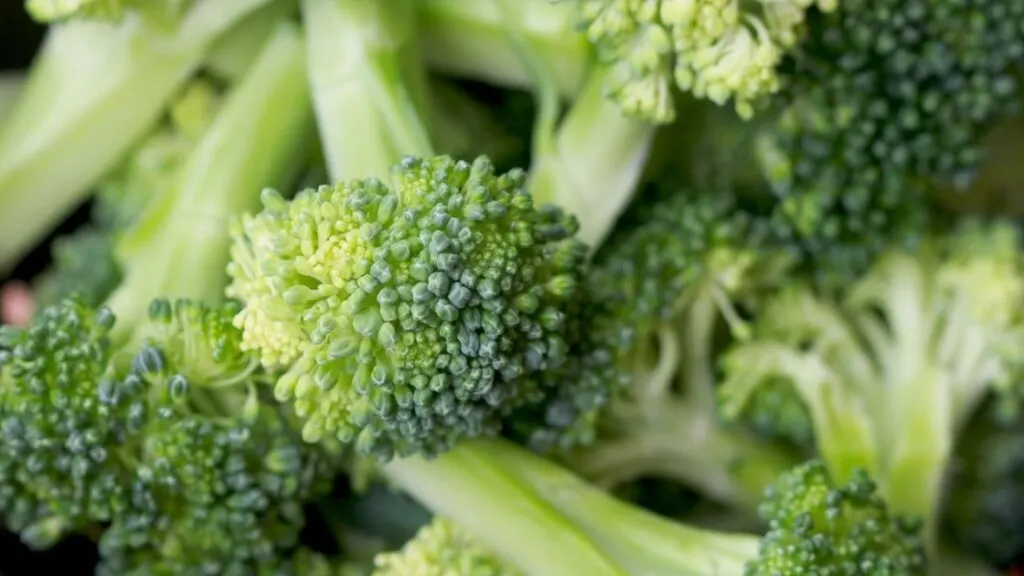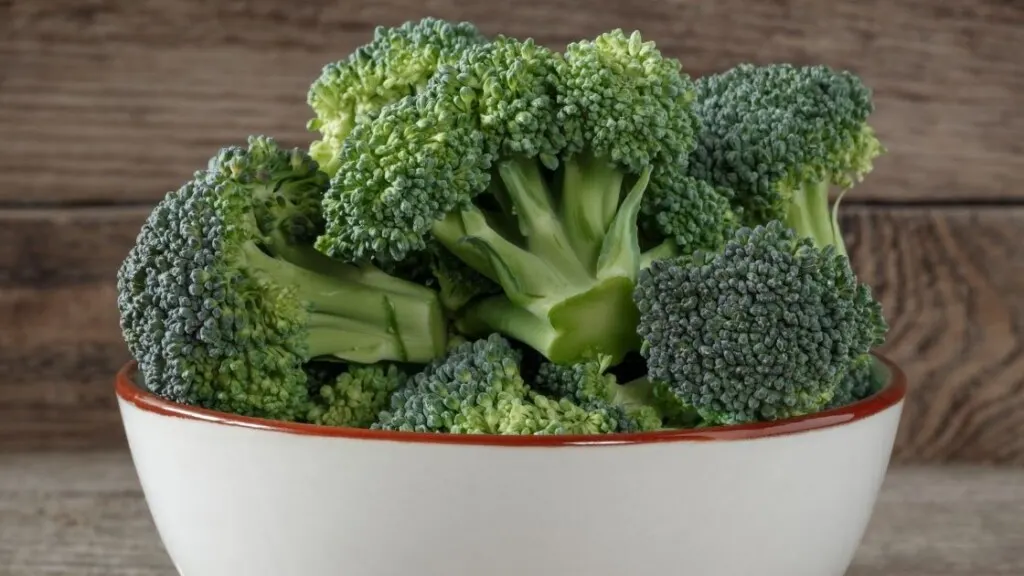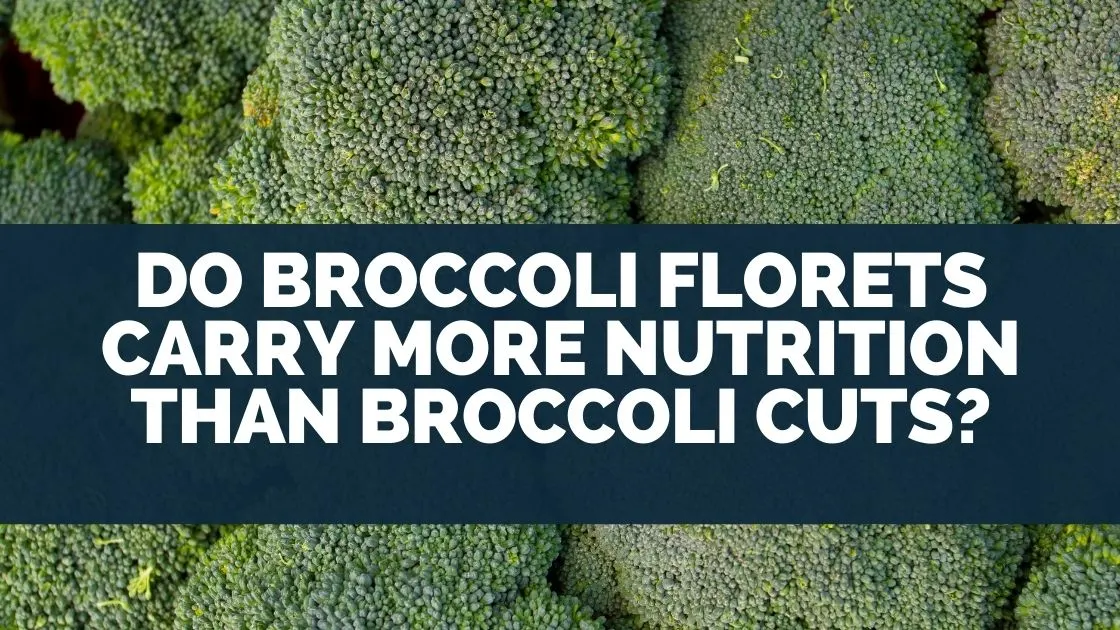
Broccoli is considered a “superfood” because it has a lot of vitamins in it. Even if your “bunch” includes picky eaters who don’t like broccoli cuts or stems, don’t worry. You can still make good use of each bunch.
Some recipes call for florets, and you might not know what they’re called or what they’re made of. Broccoli heads are the large lower part of the stalks of broccoli.
Broccoli florets can be made if you cut the head into smaller pieces and get rid of the thick stock.
Table of Contents
Are broccoli florets vs cuts better?
The florets or flower heads are almost the same as broccoli cuts in terms of nutrients. The florets have a little more vitamin A than the stems.
If your family doesn’t like broccoli stems, you can leave them out of the side dish. It is possible to use stems to make soup stock, stews, and casseroles.
The broccoli stalk, which is also called the broccoli stem, is sometimes thrown away because it is thought to be a waste of time and food because it doesn’t have a lot of flavor or nutrition.
Broccoli stems, even though they aren’t as pretty or tasty as compared to florets, they are just as healthy and nutritious.
The broccoli stem has a lot of the same nutrients as the broccoli flower, like vitamin A, vitamin C, fiber, potassium, and folate.
Broccoli Nutrition

Vitamin A
Broccoli florets have a lot more vitamin A than broccoli stalks. A 3.5 oz. serving of florets has 60% of your daily vitamin A needs. The same amount of broccoli stems have only 8% of the daily value for vitamin A, which helps keep eyes and immune systems healthy.
Vitamin C
Broccoli is a great source of vitamin C. It has about 150 percent of the vitamin C you need each day in each 3.5 oz serving of flowers and stems, which is about the same amount.
When food is cooked, it loses some of its vitamin C content.
A cooked serving still has more than one day’s worth of vitamin C, which helps keep the immune system strong. In addition, it helps to make collagen, which is a protein that is important for both joint and skin health.
Folate
Fresh broccoli stems and florets have about 17% of the daily value (DV) for folate in each 3.5 oz. serving. As a result, for pregnant women who should eat a lot of B-complex vitamins, this vegetable is a good choice. Birth defects are less likely if you eat the right amount of folate.
Other Nutrients
A single serving of fresh broccoli florets and stems has more than a day’s worth of vitamin K, a nutrient that helps stop too much blood from being lost after an injury, surgery, or when a woman is having her period.
For example, both broccoli stems and leaves have at least 5% of the daily value for several B vitamins and a lot of other nutrients.
Health benefits of broccoli

Cancer prevention
Cancer is a disease that causes a lot of cells to grow quickly and is often linked to oxidative stress.
Broccoli is thought to have compounds that can help fight cancer.
People who eat cruciferous vegetables, like broccoli, are less likely to get lung, colorectal, breast, prostate, pancreatic, and gastric cancers, according to studies that looked at people’s habits.
They are different from other types of vegetables because they have a group of plant compounds called isothiocyanates that aren’t found in other types of vegetables.
There is a lot of research that shows that a substance called isothiocyanates has an effect on liver enzymes, reduces oxidative stress, reduces inflammation, and helps the immune system fight off infections.
It also stops the formation of cancer by lowering the level of oxidative stress.
Lower cholesterol levels
Cholesterol does a lot of things in the body.
Bile acids, which help digest fat, need to be made. This is why it’s important. When fat is eaten, the liver makes bile acids.
These acids are stored in the gallbladder and then released into the digestive system.
Broccoli has substances that bind to bile acids in the gut, which makes them easier to get rid of and stops them from being used again.
According to one study, steaming broccoli is very good for lowering cholesterol levels. This has been linked to a lower risk of heart disease and cancer.
Eye health
Vision problems are a common sign of getting older.
Having more lutein and zeaxanthin, two of the main carotenoids in broccoli has been linked to a lower risk of getting age-related eye problems.
Night blindness can be caused by a lack of vitamin A, which can be fixed with enough vitamin A.
Broccoli has a lot of beta carotene, which the body turns into vitamin A. As a result, people who don’t get enough vitamin A may benefit from this vegetable.
Potential downsides

Allergy reactions are very rare when people eat broccoli. There are a few things to keep in mind, though.
Thyroid problems
Broccoli is a goitrogen, which means that in people who are sensitive to it, too much of it can be bad for their thyroid gland.
In order to avoid these negative effects, you should cook this vegetable at a very high temperature.
Blood thinners
People taking warfarin should talk to their doctor before eating more broccoli because the high amounts of vitamin K1 of broccoli could make this medication less effective.
When It’s Best
You can get broccoli any time of year, but it’s at its best from April to October. Many supermarkets sell frozen broccoli, which can be just as healthy as fresh broccoli if you can’t find it at your store.
The ideal broccoli has small, deep green florets and a strong stalk. Avoid broccoli that has a soft or bendable stalk or florets that are yellow.
Final thoughts
Broccoli is one of the most popular vegetables in the world. You can eat it raw or cooked. It’s quick and easy to make and tastes great. It is full of nutrients, high in fiber, and has more protein than other vegetables.
Other people prefer broccoli florets, but the stems are also good. Fiber is abundant in the stalks of broccoli, while antioxidants and vitamins E and K are in the leaves. The florets have a lot of calcium compared to stems.
This is undoubtedly a good thing to add to your diet, no matter how which part you prefer to eat.



Leave a comment